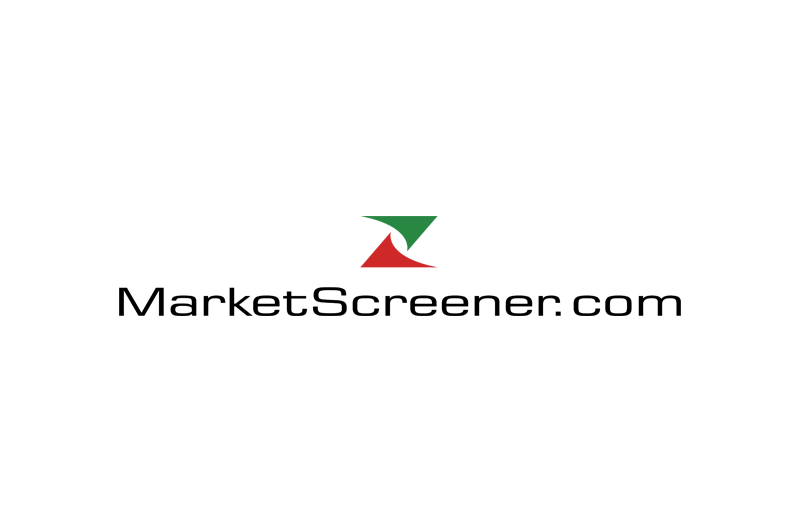Meltwater B : How To Boost Your Small Business With Social Media Marketing

The most important ingredient of boosting social media marketing success as a small business is creating a strategy.
All too often we see business owners miss the mark with social content because they lack a few simple best-practices. Things like choosing the right platforms, getting to know your followers, and weekly content calendars all make a huge difference.
The good news is more than 3.7 billion people around the world use social media to connect with friends, family, and yes, brands. Brands like yours.
Today, we’re covering just about everything you’ll need to know to boost your brand awareness and sales with several proven social media tips.
Let’s get started exploring how to use social media marketing for small businesses.
If it’s not already obvious, social media platforms are one of the best ways for businesses to reach and interact with their customers. Outside of email marketing, social media is the most direct line to both current and future customers.
But what is social media marketing? And why do businesses need a social media strategy?
At a high level, social media marketing is a deliberate and strategic approach to reaching an audience and engaging with them when and where they want. Social media allows SMBs to leverage the most connected networks of human beings on earth in order to build meaningful cross-channel relationships and provide solutions to their pain points.
California small business (Sociology Coffee Bar), for example, uses social media marketing to entice local residents to come in and try a variety of their beverages through captivating imagery:
Link to Instagram post: here.
However, posting content isn’t the only way to get a ton of value from social media.
A business that relies on knowing what a consumer is saying about the brand would monitor social media conversations and respond to relevant mentions – monitoring.
A marketer who wants to understand how the brand is performing on social media would analyze its reach, engagement, and sales on social media with an analytics tool – analytics.
A business that wants to reach a specific audience at scale would run a highly-targeted social media advertising campaign – advertising and engagement.
Now that you’re sold on utilizing social in your overall marketing, it’s time to get into building a strategy. This is where the best works happens and you start to see results.
It’s time to dust off the neglected profiles and build off what has worked in the past. A social media audit is an opportunity for your small business to understand what’s happening and how to craft a strategy for your marketing strategy moving forward. An audit includes:
Should your small business choose LinkedIn, Pinterest, Snapchat, Instagram, or even TikTok as your platform of choice? The answer: it depends. First and foremost, you decide the types of new customers you are trying to reach. Each platform offers a unique target audience depending on your goals. Here’s an overview of each:
LinkedIn marketing example: Goodr is an up-and-coming (small) sporting goods brand, primarily selling accessories such as sunglasses and hats. Their identity and culture carry through everything they do on LinkedIn.
Link to LinkedIn post: here.
Knowing basic demographics such as age, gender, occupation, and location is critical for small businesses. Not only does it help to improve your product, but it allows you to spend your social media marketing dollars wisely. And while you shouldn’t make assumptions on the persona’s of customers based on demographics alone, they can provide you with a launching point.
The effectiveness of your marketing message, for example, may be affected by their age or location. Or, people with certain interests in your audience may interact with different types of content. You can find out such demographics using surveys, a social media monitoring platform such as Meltwater Consumer Audience and Insights, or by simply looking at who your existing clients are.
We recommend trying all three.
Any marketer that has spent time building a successful social media marketing strategy will tell you that a content calendar is key.
When your content regularly appears on your audience’s feed, it becomes much easier to create a consistent stream of engagement and interactions with your target audience. Posting consistently great content increases your organic reach through a platform’s algorithm, which means that your posts get shown to new people, and you’re more likely to get more followers.
A calendar also gives you a high-level campaign overview, which allows you to create a strong brand message and effective content cadence. When planning your content, organize it chronologically by date and time of publication and then by social network. This may seem intuitive, but many marketers forget to do this and lose sight of their weekly, monthly and daily routines.
One of the most overlooked social media tips is experimenting with the timing of your posts to optimize engagement. All too often a marketer will get in the habit of posting at the same time every day.
The best times to share content on social channels will depend on when your followers are online and when they use specific social channels. But here is a jumping-off point for the next campaign (all times EST):
*These times will vary based on your specific audience.
Visual content has proven to be among the most efficient and effective ways to communicate your message and increase brand awareness. Whether your a seasoned designer or just getting started, there are two easy things you can do to create the best visual content:
Small business and Shopify merchant, Hair Works, uses video content from their community on Instagram to drive product engagement. Notice the portrait orientation of the video – perfect for the Instagram News Feed:
And if you’d like to learn even more, we’ve gathered examples of posts, tweets and videos from brands that can inspire your social media strategy.
At the end of the day, it’s called ‘social’ media for a reason. The platforms discussed above are the world’s largest online communities where people go to connect with family, friends, and yes, even small businesses.
San Francisco based interior design firm, The Wiseman Group, engages with their community by sharing captivating stories of their clients across social:
Actively engaging with your community is an important part of maintaining a social presence for any organization. But for small business owners, time is their most valuable asset. Using a tool with community management capabilities will not only make your social activities easier, but it will also maximize your effectiveness.
Abraham Lincoln is famous for saying, ‘Give me six hours to chop down a tree and I will spend the first four sharpening the axe.’
The tools you use to manage your marketing efforts are your axe. And they need to be sharp.
Leveraging a variety of tools to manage your marketing presence online can mean the difference between success and failure on social media. Most importantly, they allow you to compete with the world’s largest and most successful brands and businesses.
Disclaimer
Meltwater BV published this content on 05 March 2021 and is solely responsible for the information contained therein. Distributed by Public, unedited and unaltered, on 05 March 2021 22:42:04 UTC.
Why Social Media Marketing is Important for Your Small Business
7 Components of the Perfect Social Media Marketing Strategy
1. Conduct a social media audit
2. Select the best social media platforms
3. Get to know your audience and followers
4. Build and utilize a social media content calendar
5. Experiment to find the best times to post
6. Creating engaging images and videos
7. Engage with your community
Small Businesses Can Win on Social Media, Too
3 ways to recruit engineers who fly under LinkedIn’s radar

Sergiu Matei is the founder of Index, a platform that helps teams find and hire world-class remote software developers and be globally compliant from the get-go.
We’ve recently been bombarded with news of job surpluses, including predictions that the number of software developer roles will increase 22% by 2030. With the need for nearly a quarter more developers, recruiters are having to scale their search and look under the stones that have previously been left unturned.
It’s easy to assume in the digital age that job candidates are waiting at the end of a mouse click, but the online hiring space isn’t as encompassing as we think. Less than 10% of people on LinkedIn don’t have an education that surpasses high school, despite 87% of developers having taught themselves a new coding language, framework or tool without formal education.
People who live in emerging markets use LinkedIn less frequently, even though these locations harbor some of the world’s most promising tech talent.
Some developers choose not to have a LinkedIn account because it feels like another social media channel to maintain. This aversion makes sense considering engineers focus more on hard skills rather than their online personae.
This week, LinkedIn announced it would start offering its services in Hindi, which will allow the service to reach 600 million people globally. People who live in emerging markets use the platform less frequently, even though these locations harbor some of the world’s most promising tech talent.
Companies can’t let how they’ve hired in the past influence their approach today — doing so means missing not just the quantity of developers, but the quality and diversity of them. The remote revolution didn’t just broaden where we can recruit, it’s expanded who we can bring on board. With that in mind, these are the best ways to tap into the hidden developer gems.
Open up your content, chats and code
No recruiter should think of hiring a developer as the same process as selling a product or service. As Adam DuVander explains in “Developer Marketing Does Not Exist,” resonating with developers requires more education and less promotion than the majority of companies currently provide.
The content you publish can organically pique people’s interest, as long as it has a strategic purpose and doesn’t overly mention your brand or services; for example, blog posts about upskilling, industry trends and exclusive data insights. You could also host events like webinars, round tables, quizzes and hackathons that are less for recruitment purposes and more to showcase the team and culture. Don’t be afraid to be lighthearted with your content, either. Memes, GIFs and videos are a great way to demonstrate that you don’t take yourself too seriously. And once you remove the promotional positioning, developers in the shadows will start to come forward.
People Buy People On LinkedIn Not Companies: Here’s Why

On LinkedIn, people buy into other people, not companies. LinkedIn is all about you, the leader. When people make decisions, it is based on who you are, how they feel about you and other emotional, sometimes intangible feelings. This is true for social media and in real life.
Gut reactions, good vibe, rapport — people build up a trust with you, or not as the case may be. That’s why authenticity is key. People will find out if you’re fake. And since people on LinkedIn buy into other people, that’s why the best course to get more business is to market your company through your personal page on LinkedIn.
I’ve written before about what I call “the Richard Branson effect,” which can easily be replaced with the Elon Musk effect, the Bill Gates effect or any other public figure in business. These types of company leaders have more engagement and followers on LinkedIn than their respective companies. One hundred times more people follow the leader and founder of Virgin Atlantic, Richard Branson, than the company itself.
People buy people. People follow people, not companies. Even when leaders like Michael Dell have fewer followers than their company page, they actually have more engagement levels for their posts.
As another example, if you look at the Microsoft company page on LinkedIn (and bearing in mind that they own LinkedIn), the company has 14 million followers, but sometimes its posts get literally zero comments. They tend to be boring company updates about diversity, the environment, Azure, the Surface products. Who cares?
So, you have to wonder, if Microsoft often gets such little engagement on LinkedIn, then how do small companies have a chance? You have to keep in mind that when the CEO of Microsoft, Satya Nadella, posts, he routinely gets hundreds of thousands of engagements. People buy into Satya, and when he talks about Microsoft, people listen.
They see more authenticity in Satya. It feels more personal. You can’t take the company to the pub, cafe or restaurant but you can take the CEO or Founder.
It’s often the best place to do business in a bar. This is where the real action happens and where the real “you” comes out. You have a drink, you relax, you build a rapport and you share. You then start trusting one another and that’s how business is done. You can’t take a company out for a drink.
I closed my physical office in Singapore, and I have all my meetings at the W Hotel’s WooBar. I invite people to come and meet me there as it’s a break for them away from their home or physical office in the business district.
Their decision of whether to outsource to my company is often based on how well they get along with me. It can of course go both ways. The ones who enjoy my sometimes polarizing personal brand often become my clients. The whole process is based on social selling, not hard selling.
Build a relationship socially with potential clients. Share the good, bad and ugly about yourself on LinkedIn. You then gain permission in other people’s view to share your company through your personal page on LinkedIn. People will come to trust you and buy your service because of you.
Ultimately, selling is about people, trust, rapport and relationships, and you can’t do that through a company website or a company page on LinkedIn; you can only do it through you and your personal page and brand.
So, my advice is don’t waste time on your LinkedIn company page, and instead focus on your LinkedIn personal page to see results. The examples of successful business personalities speak for themselves.
Forbes Business Council is the foremost growth and networking organization for business owners and leaders. Do I qualify?
8 Tools that are a Must for LinkedIn Automation – Times News Express

When it comes to social media platforms, LinkedIn might come across as Facebook’s older, more responsible, and infinitely more boring sibling. When it comes to functionality, however, it is an invaluable resource to professionals all across the globe. As of 2021, LinkedIn has more than 774 million registered members from more than 200 countries, and savvy HR and marketing-minded professionals would be wise not to overlook the vast array of resources it offers.
From networking to brand building, to publishing, LinkedIn can provide a multitude of services. However, all of these options and the wealth of data can potentially hamper efficiency and productivity.
Here are the seven must-have Linkedin automation tools that will help get the results you want in less time.
Lead generating software that responds at the click of a button is good. Software that runs in the background while you accomplish tasks elsewhere is even better. For example, Castanet can manage single or multiple LinkedIn profiles and continuously run to automatically generate appointment requests, connection invitations, and skill endorsements.
Searches can be precisely filtered by LinkedIn profile characteristics in order to seek out quality clients who are more likely to have an interest in your company and the products or services you offer. When you have a connection with your clients, it means better leads and less wasted time on undesirable prospects.
Dux-Soup is a sales tool focused on automated lead generation. Based upon the parameters you set, it automatically contacts sales prospects selected on LinkedIn. It can also send direct messages, endorse skills, send personalized connection requests. A handy feature is its ability to schedule multiple, delayed, personalized messages.
Crystal is an excellent source of information for both sales and HR professionals. It is able to mine data from LinkedIn profiles to predict communication styles and personality types and therefore give you a better idea of how best to approach customers, coworkers, and prospective employees.
Using the DISC personality method, Crystal also offers various training courses to show you how to implement your acquired data into the most effective processes for team building, hiring, and sales generation.
LeadFeeder uses web tracking technology to identify what companies visit your website and are potentially interested in your services. It is beneficial for gauging the effectiveness of your marketing efforts, as it also tracks how visitors find your website and the path they take. It can even offer data on the specific portions of your website being viewed.
One strange downside of LinkedIn is the overabundance of users and potential sales opportunities. LeadFuze uses powerful filters to narrow down prospects, generate lead lists, and acquire verified personal email addresses to initiate contact.
On the HR side, LeadFuze can run filters to search for potential candidates across LinkedIn who are not actively searching for a job. The LeadFuze search allows hiring managers to find contact information for quality individuals who would be unlikely to apply for posted job offerings independently.
LinkedIn Sales Navigator is added via a simple Chrome extension. It allows you to view LinkedIn profile data if you are emailing someone with a corresponding Gmail account. The LinkedIn Sales Navigator account gives you additional information about them as you’re engaging in direct contact, making it easier to tailor your communication to the specific individual you’re dealing with.
When trying to gather as much information about a potential client as possible, it can sometimes be an arduous process to search throughout the various social media platforms for the same individual or company. Discoverly streamlines that process by gathering all the information from the most commonly used social media sources and compiling each person or company’s social media presence all in one place.
No more logging into five different places to get a comprehensive view of a prospective client’s web presence. Instead, Discoverly lets you toggle between all the platforms in one location for quick searching abilities.
Conclusion
Whether you’re using LinkedIn to build your brand, generate sales leads, or expand your hiring search, the actual platform can contain so much data that streamlining is necessary. These after-market tools and plugins can help you navigate LinkedIn and make the most out of all the resources at your disposal.
Image Credit: pixabay; pexels; thank you!
The post 8 Tools that are a Must for LinkedIn Automation appeared first on Calendar.
-

 SEARCHENGINES6 days ago
SEARCHENGINES6 days agoGoogle Core Update Volatility, Helpful Content Update Gone, Dangerous Google Search Results & Google Ads Confusion
-

 SEO6 days ago
SEO6 days ago10 Paid Search & PPC Planning Best Practices
-

 MARKETING7 days ago
MARKETING7 days ago2 Ways to Take Back the Power in Your Business: Part 2
-

 MARKETING5 days ago
MARKETING5 days ago5 Psychological Tactics to Write Better Emails
-

 SEARCHENGINES5 days ago
SEARCHENGINES5 days agoWeekend Google Core Ranking Volatility
-

 SEO6 days ago
SEO6 days agoWordPress Releases A Performance Plugin For “Near-Instant Load Times”
-

 MARKETING6 days ago
MARKETING6 days agoThe power of program management in martech
-
SEARCHENGINES4 days ago
Daily Search Forum Recap: April 15, 2024



